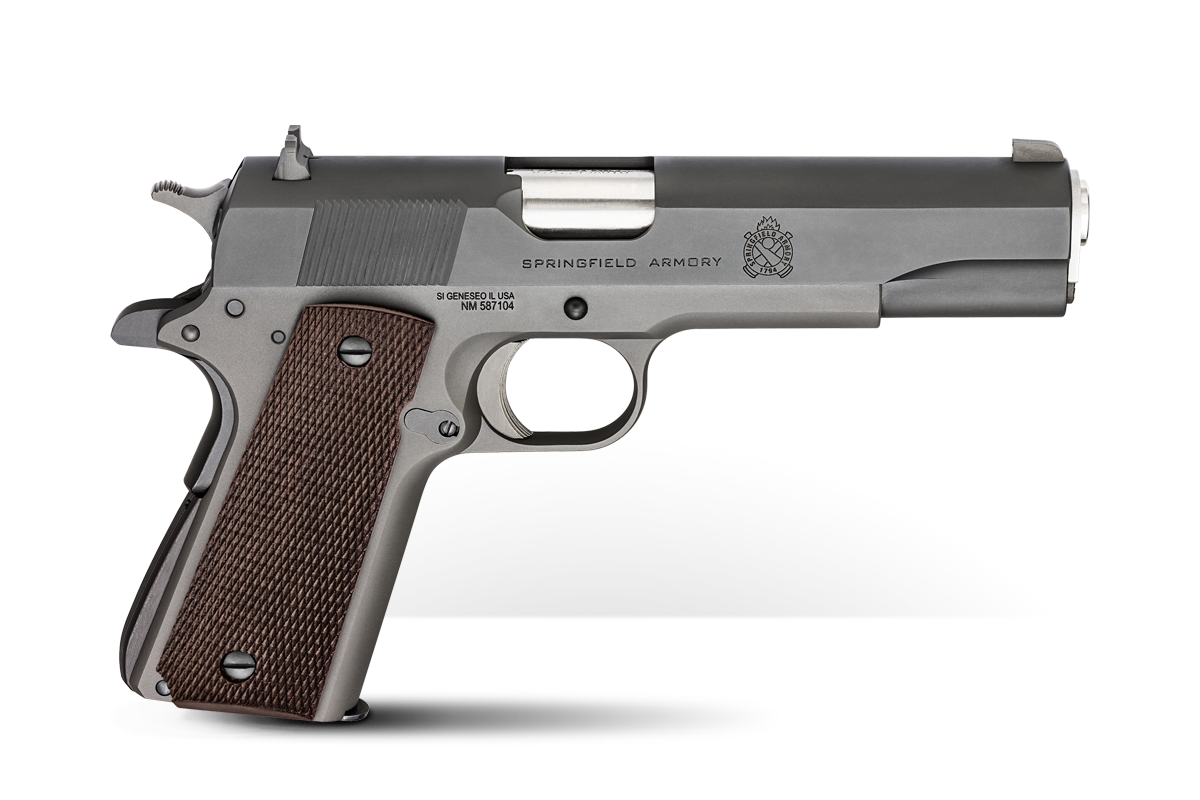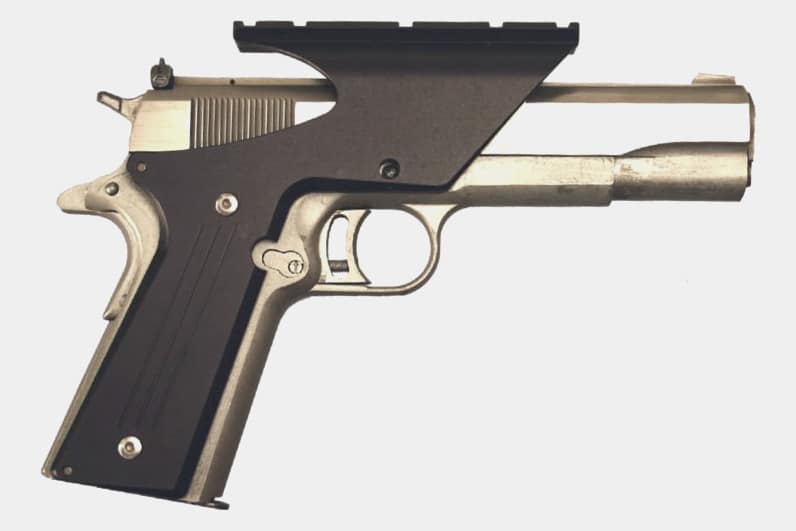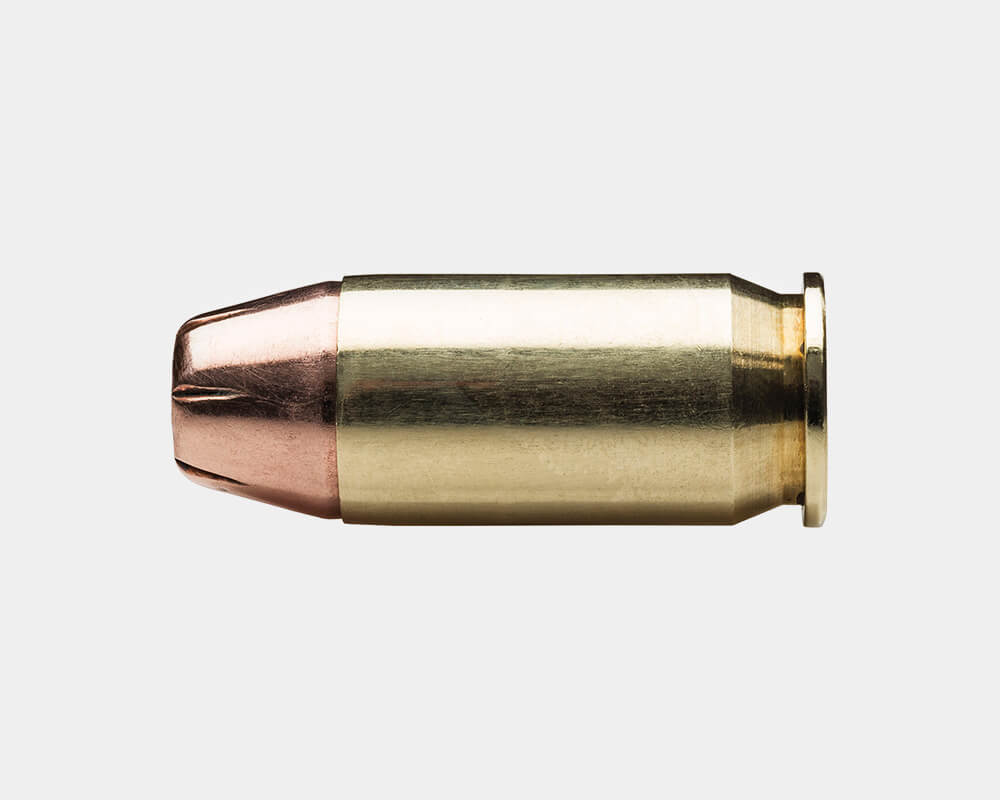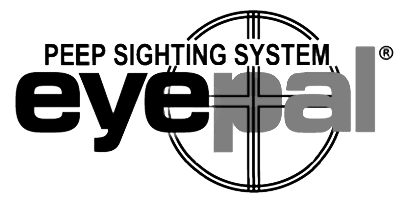Did You Know the Mil-Spec Could Do This?
January 26th, 2023
9 minute read
Ever since Greek and Roman gods ruled the skies, mankind, reduced to flailing about here on earth in the mud, wished to be able to point their fingers and “smite at a distance” as the gods could — and apparently did at times. All that lightning and thunder had to come from someplace.
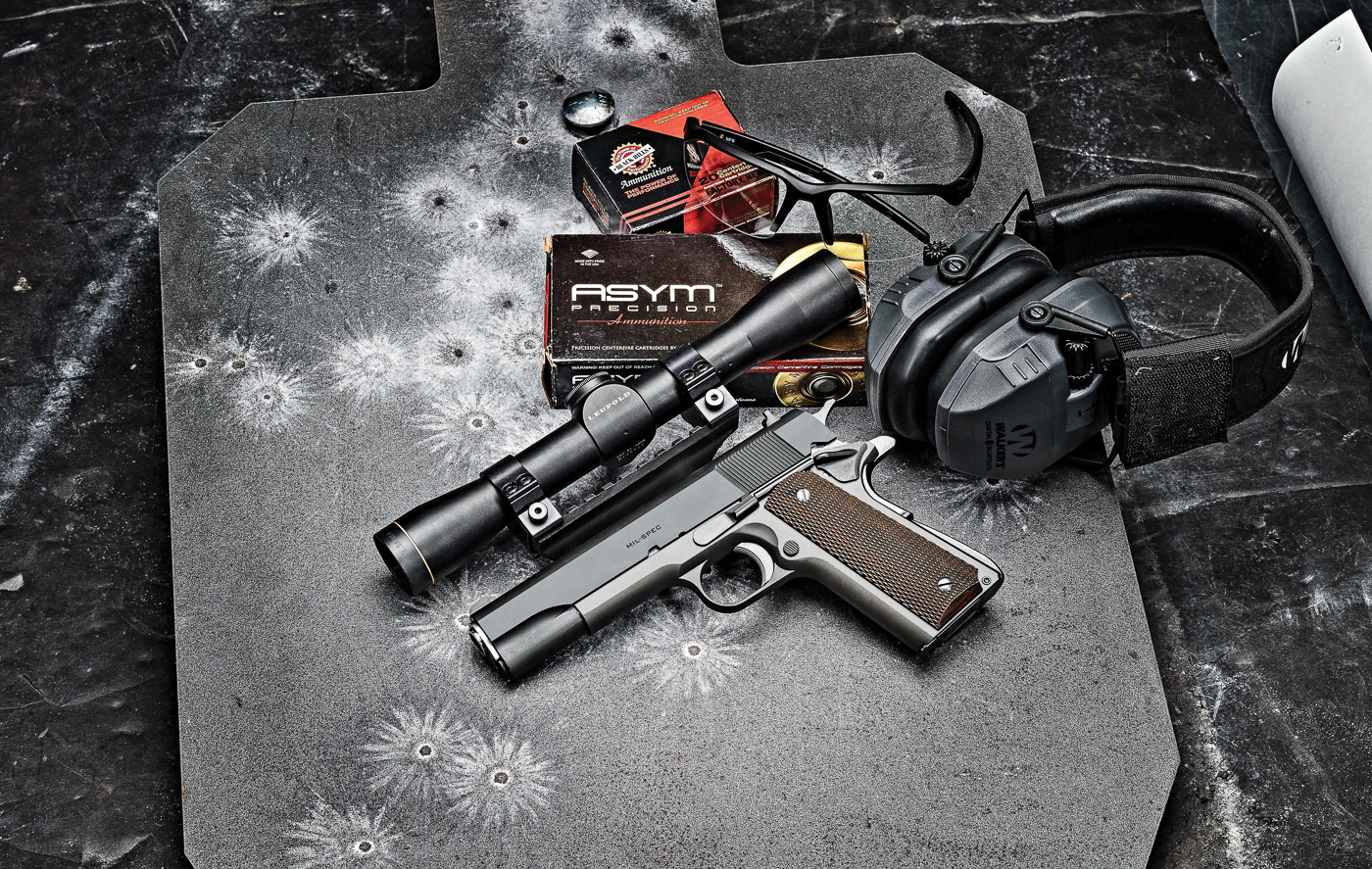
Some thousands of years later, I find that same wish lives on in me when look out at a piece of steel or paper in the distance. In that spirit, I thought it’d be fun — and interesting — to see just how realistic it is to point my finger and do some smiting.
Full disclosure here — I’ve always enjoyed long range shooting with iron-sighted handguns of all sorts. My 100-yard torso gong here rings regularly thanks to an assortment of small-frame revolvers and other implements never intended for such madness.
In decades past, when hunting, target shooting and recreational shooting ruled the industry, it was all about accuracy — at least what was considered accuracy in those ancient times. When I was a gun-crazy teen in the 1960s reading publications like Gun Digest, writers would wax poetic about a hunting rifle delivering reliable “2.5″ groups at 100 yards!”. Imagine that! As a matter of fact, it was noteworthy to be able to best 3″ with many sporting rifles.
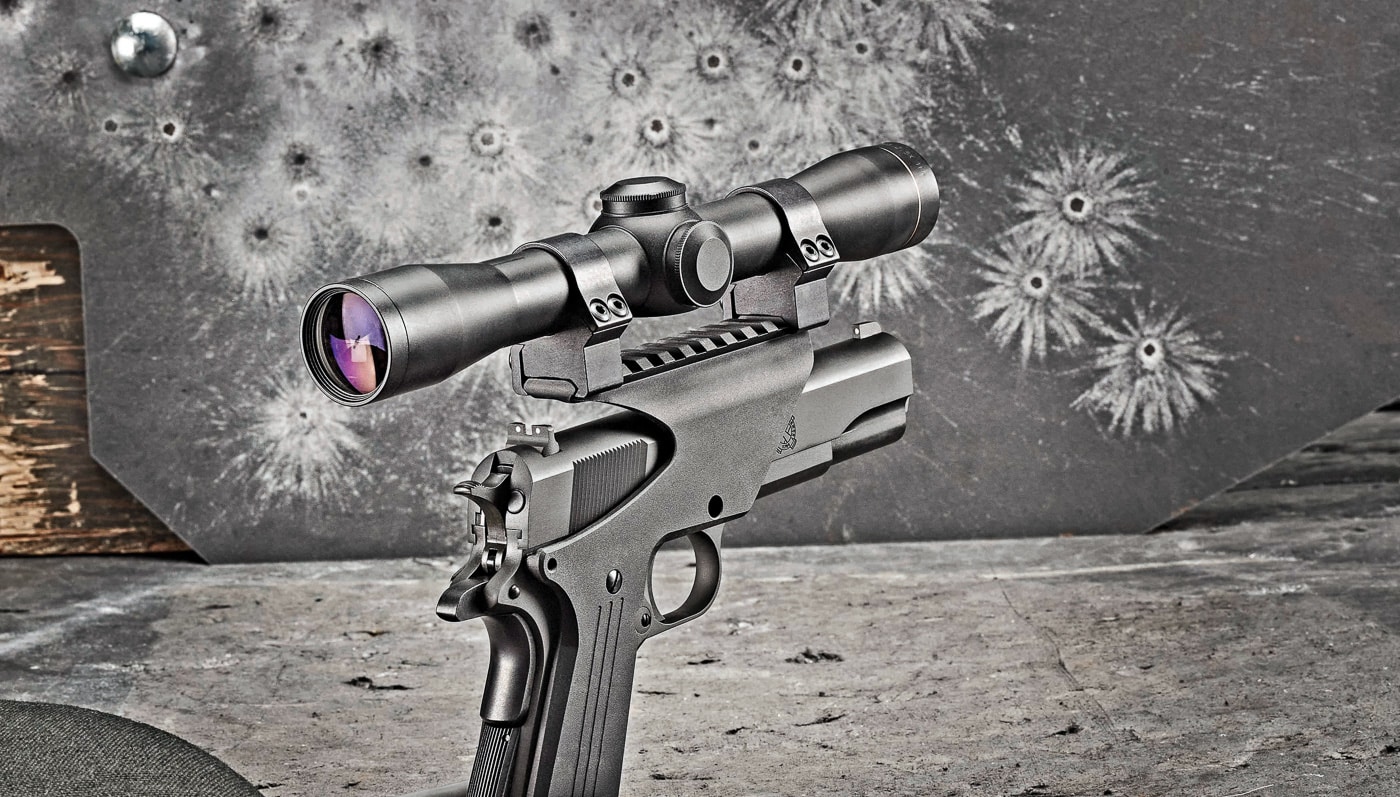
Long-range handgunning was thought to be a waste of time by most cognoscenti, and hip shooting at toe-to-toe distances seemed to meet most defensive needs. I still shudder at being taught “point-hip shooting” in the late ’60s. Yikes.
The late 1990s entered the picture and, almost overnight, our industry changed from sporting and target to a focus on self-defense, survival, preppers, AR-style rifles and ultra-accurate bolt-guns. Those magical CNC machines also assured even the most basic handgun designs these days can generally outshoot most anything from the old days — even some rifles. Nonetheless, most of the defensive shooting training today focuses on close-range tactics.
Nothing wrong with that, since most inconvenient incidents tend toward that trend. But the ability to point and smite at some distance bears significant benefits, too — yet is mostly ignored.
Ankle Weights
Have you ever worn ankle weights? At first, they seem awkward, heavy and ridiculous. But the magic occurs when you take them off. Suddenly, you feel as if you can run faster and jump higher. Unexpectedly, what seemed like a chore before (a short sprint?) now seems almost effortless.
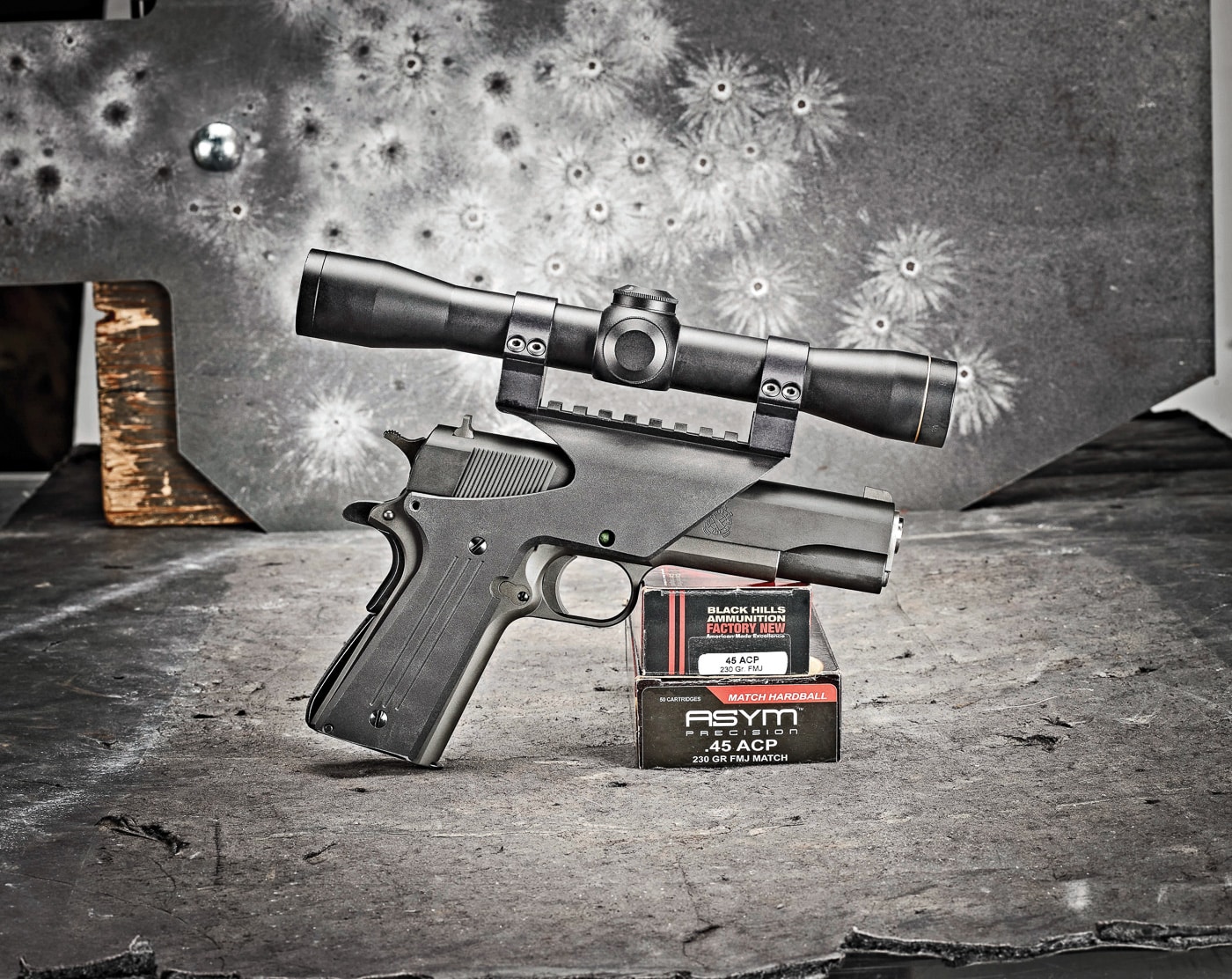
The lesson is to challenge yourself by pushing the boundaries of your abilities, learning what you can and can’t do. Getting rid of those ankle weights made a seemingly difficult task less intimidating.
Long-distance shooting can do the same thing for you. Struggling to stay on target at 15 yards? Learn to get on-target at 25 or 50, then when you return to 10 or 15 it seems like you’re aiming at the side of a barn — and you can’t miss.
In that spirit, I took a common, everyday Springfield Armory 1911 Mil-Spec, gathered some .45 ammo from different makers and added a nifty old scope mount from Aimtech I had on hand that simply replaces the right grip panel on a 1911 (it’s the Model APM-7). My goal was to shoot the gun at 25, 50 and 100 yards with irons, then do it again using an old Leupold FX-II 2.5x28mm fixed power Scout Rifle scope I had lying around.
I get it, red dots are all the rage today. But you simply can’t get the same level of precision with a dot, especially at 100 yards, that you can with a cross-hair optic. Let’s not fight about it until you actually try a scope on your handgun, even a .22. The difference is remarkable. Trust me.
The Test
I’m one of those blessed with the opportunity to shoot off my back deck. I have a nice 100-yard set-up I use all the time, and generally have a steel torso, 6″ plate and steel rotating target set up there. I add a rolling target frame I made if I’m zeroing or doing research. Keep in mind, too, when shooting iron-sighted handguns at distance, I’ve found having a bold aiming point is critical, especially as our eyes age.
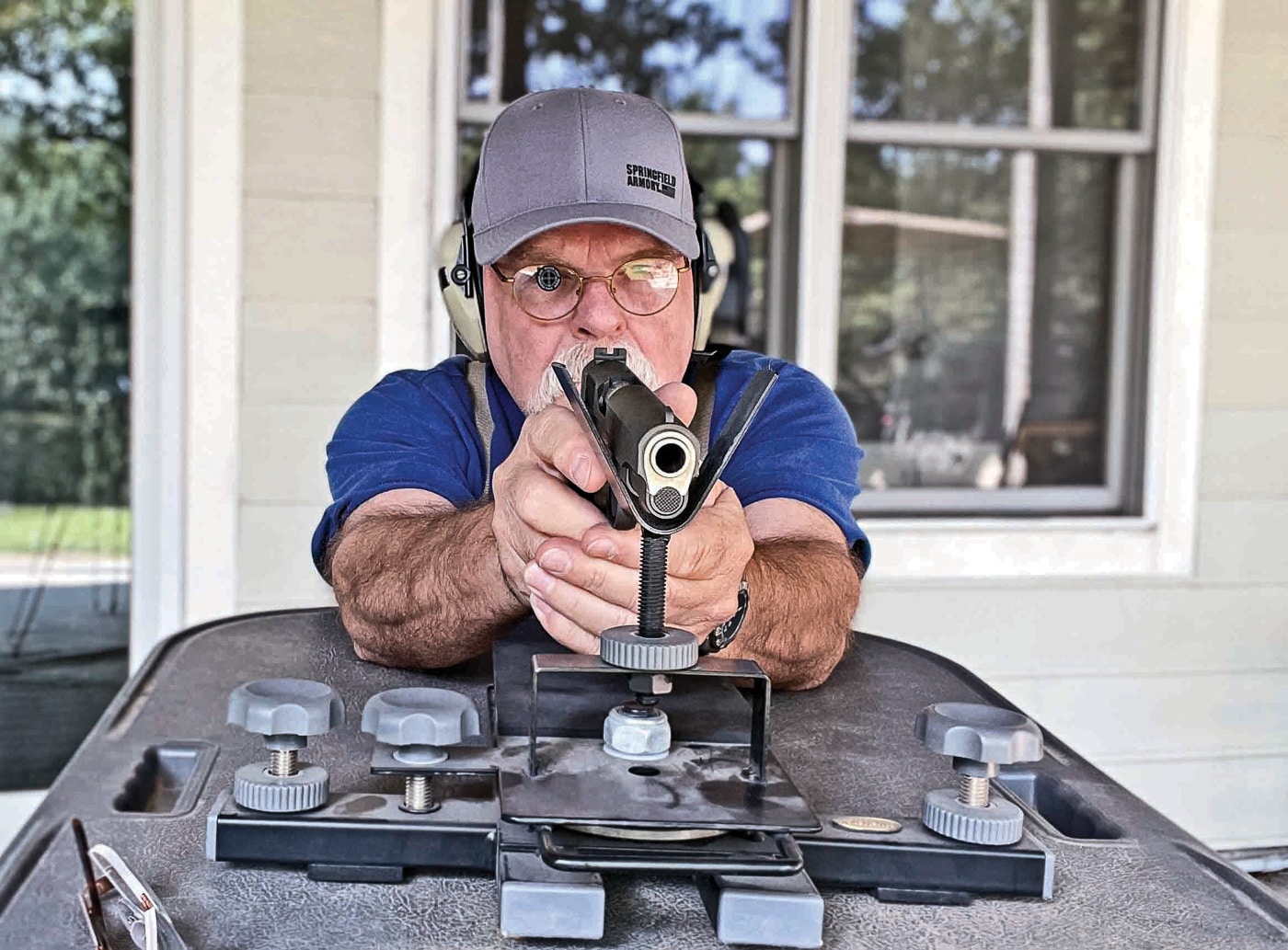
I also use a device called an “Eyepal”, which is a small, round piece of thin plastic film with a small aperture in it. You place it on your shooting glasses right where you look through, and the aperture radically sharpens your iron sights. I can’t recommend it enough.
I have a comfortable Caldwell shooting bench I leave at-the-ready, so I geared up and went to work. The first series of iron-sighted groups at 25 yards let me get familiar with the gun and the trigger. Speaking of which, the trigger broke at an average of about 5 lbs. with a tiny bit of creep. It’s an excellent trigger for a stock “Mil-Spec” 1911, but I also have no doubt my groups would have been modestly better with an even sharper, cleaner trigger. Sounds like another test down the road.
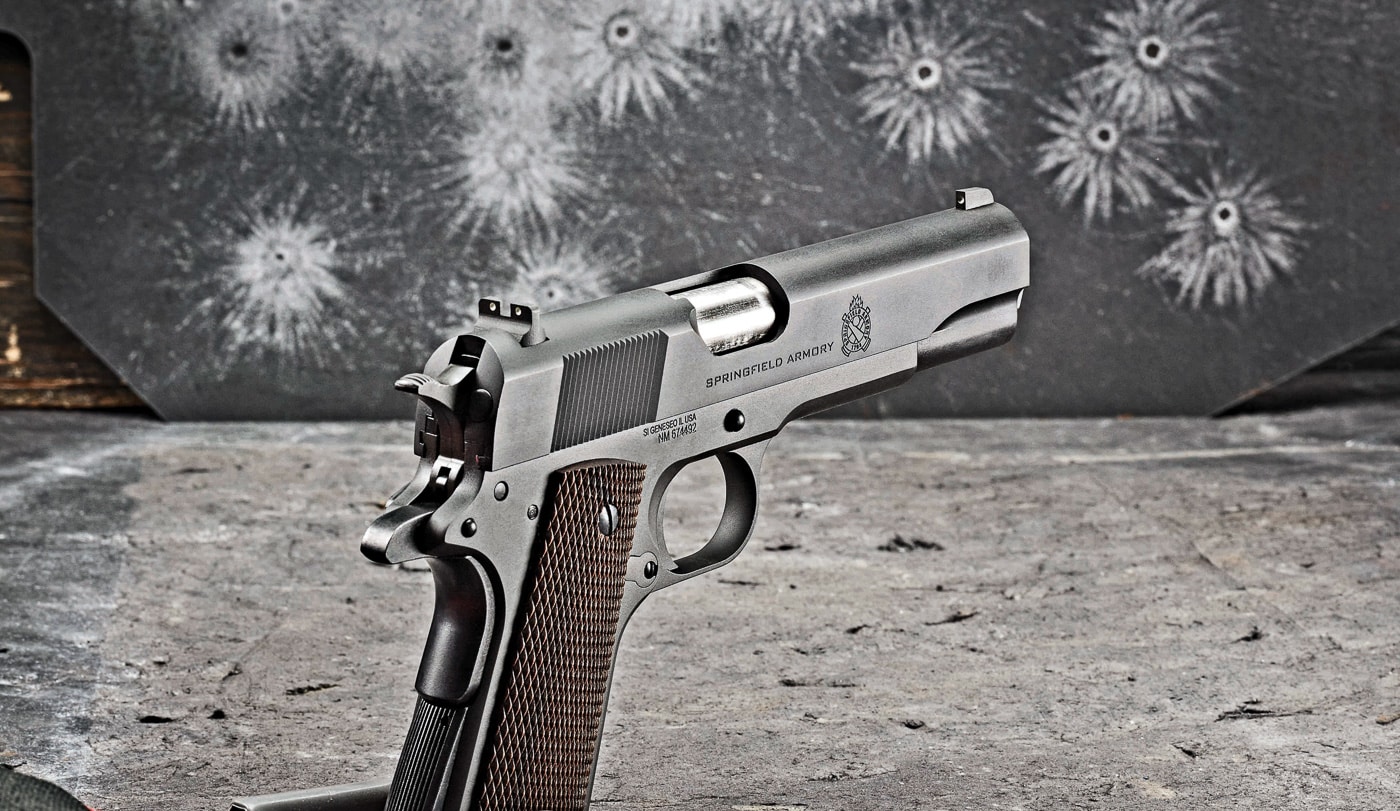
After shooting at 50 yards, still with irons, I began to get a handle on what ammo the gun liked best. In our case, it was Black Hills 230-gr. Ball and some older ASYM 230-gr. FMJ Match ammo. I’ve always found both to be good benchmarks to use when trying for the best accuracy from a pistol.
So back at 25, I settled down and shot several groups with both loads, taking the best of the crowd as final. Ditto at 50 and then, changing to big silhouette oval targets (one above the other and easy to see) I went for it at 100. It took me a few five-round groups to settle down, but e-gads … even with the Eyepal it was tough to get a good sight picture “out there!” I settled in and shot several five-shot groups, taking the best of them as my final say.
Scoping
Installation of the Aimtech is simple if you leave off the replacement of the hammer pin and mainspring housing retainer pin. I found simply using the grip screws to hold the panel in place worked fine. I tightened the screws after each magazine full and the zero didn’t seem to wander. I’m not saying to do this, but it worked for me.
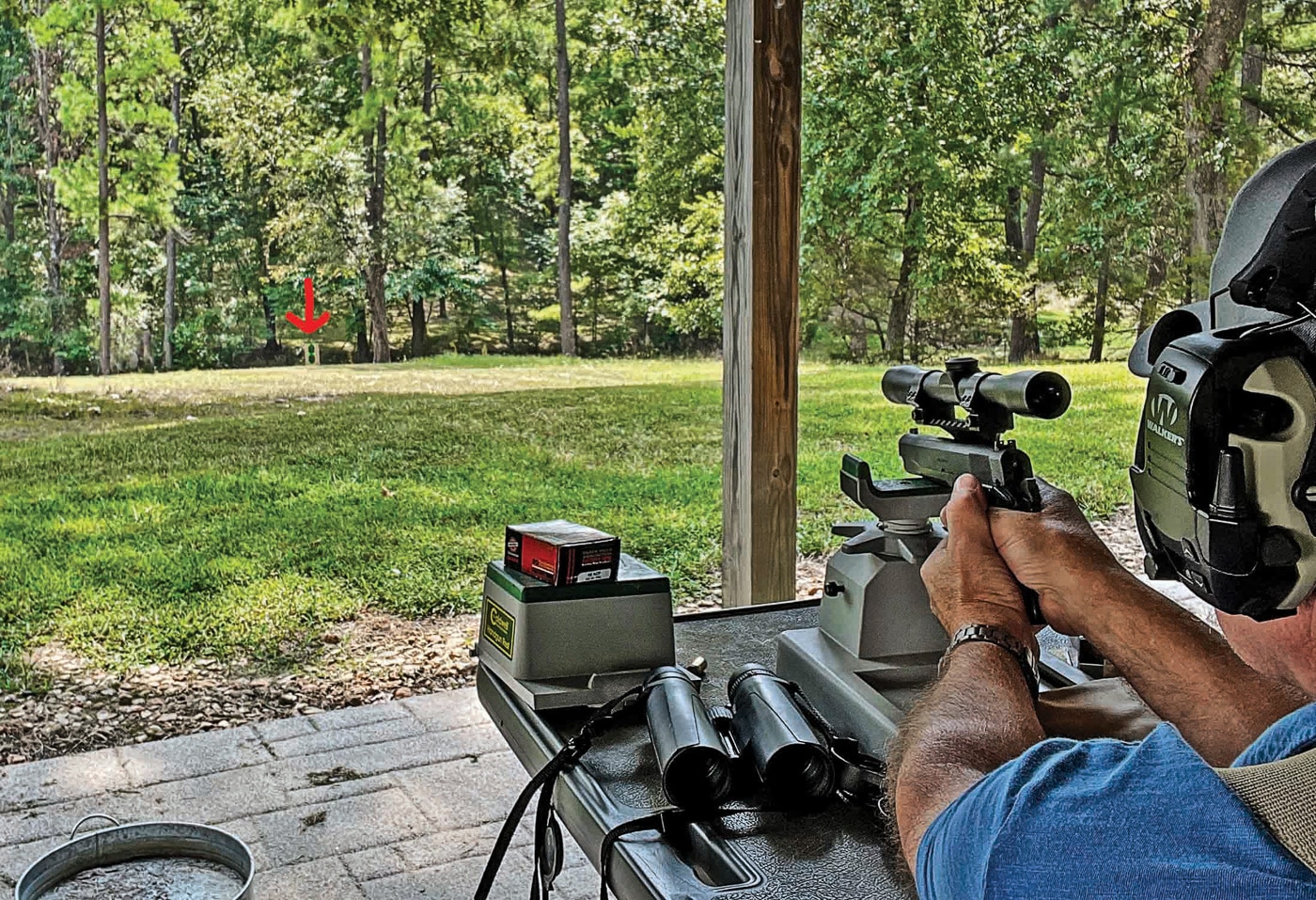
I mounted the scope and did a rough zero at 25 yards. Using the same combination of ammo used for the iron sights I re-shot the 25, 50 and 100 yard targets, shooting a few warm-up groups at each distance. The scope made holding a firm sight picture vastly easier and more consistent at all the ranges.
While the irons were a real challenge at 50 and 100, I honestly felt the only thing hindering me at 50 and 100 when using the scope was the trigger pull. Again, it has a really good trigger, but one with an even lighter, crisper release would have helped. But hey, let’s not forget this is also a $709 gun at full retail and was/is never intended to be a svelte target-grade auto. Nonetheless, it surprised me.
As a side note, I noted after a few magazines the view through the scope was hazy. Gas and powder residue was collecting on the front glass of the scope since it’s so near the muzzle. The routine then became shoot a mag or two, wipe with a lens cleaner towel, and repeat as needed. Irons win that fight hands-down.
Specifics
For iron sights, the only surprise I had was I thought I’d have done better at 100 yards. Alas, the culprit here is not the gun, but my 68-year-old eyes. I tried it without using the Eyepal, but we won’t dwell on that bit of surprising incompetence on my part.
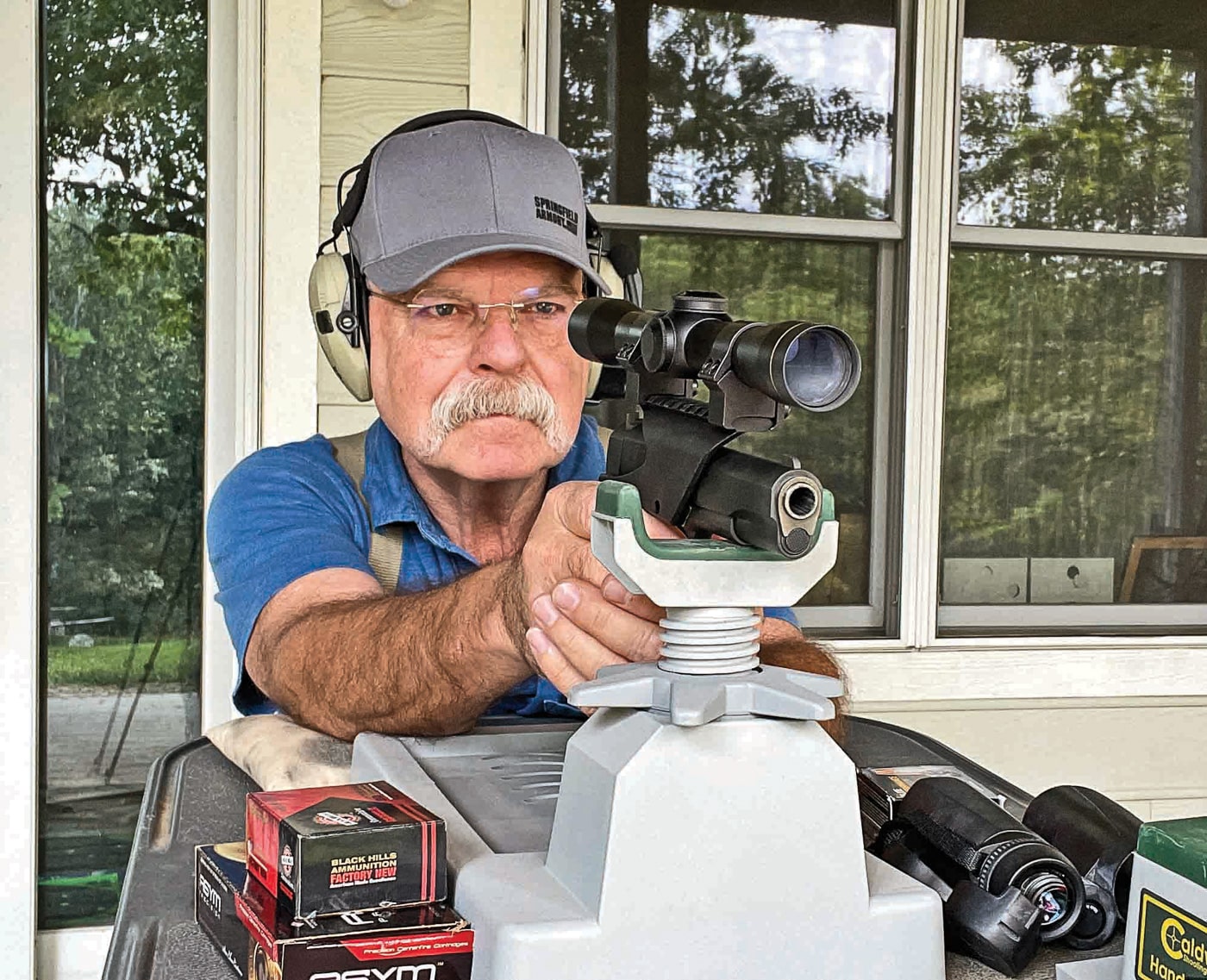
So, with irons, my best 25-yard group hovered in the 1.5″ area with ASYM ammo. At 50, I honestly surprised myself with a solid 3″ group with Black Hills. I admit I began to really respect the performance of this modest 1911 after that. At 100, after much fussing, squinting, peering, harrumphing, guessing and just plain wishing, I managed a 9″ group with Black Hills. I was confident the gun could do better and was looking forward to using the scope. I think younger eyes might have found 4″ or 5″ easily, with excellent trigger control in play.
The scoped portion of the test was a delight, and I’m going to put this assembly on a match-grade 1911 I have. I predict interesting results.
At 25 yards, scoped, the ASYM ammo delivered the best group, right at .75″. I know it seems daring to say, but I honestly think with an enhanced trigger it could have been even better. From a Mil-Spec, no less! Perhaps the match-grade barrel plays a role? At 50, Black Hills flaunted a 2.25″ group as best of the day at that range. Then, at 100, the scope showed the advantage it gave my old eyes, allowing me a 3.75″ group using Black Hills.
I’d like to do this test again using a closer eye relief rifle scope, maybe something in the 4-10X range. Recoil won’t matter as the weight of the added scope really tames things. That higher magnification also allows you a more precise hold.
Performance — Iron Sights
| Load | 25 Yards | 50 Yards | 100 Yards |
|---|---|---|---|
| ASYM 230-grain FMJ Match | 1.5″ | n/a | n/a |
| Black Hills 230-grain FMJ | n/a | 3″ | 9″ |
Performance — Scoped
| Load | 25 Yards | 50 Yards | 100 Yards |
|---|---|---|---|
| ASYM 230-grain FMJ Match | 0.75″ | n/a | n/a |
| Black Hills 230-grain FMJ | n/a | 2.25″ | 3.75″ |
The Lessons?
It’s hard to be reminded of your humanity. Growing older and changing eyesight can really affect your ability to shoot accurately. For myself, modest training, concentrating on the trigger press and practicing at longer distances makes the close-in work much easier. It’s honestly like taking off ankle weights. After struggling to hit a 100-yard target, seeing that bullseye loom at you from 10 yards almost seems like cheating. Almost.
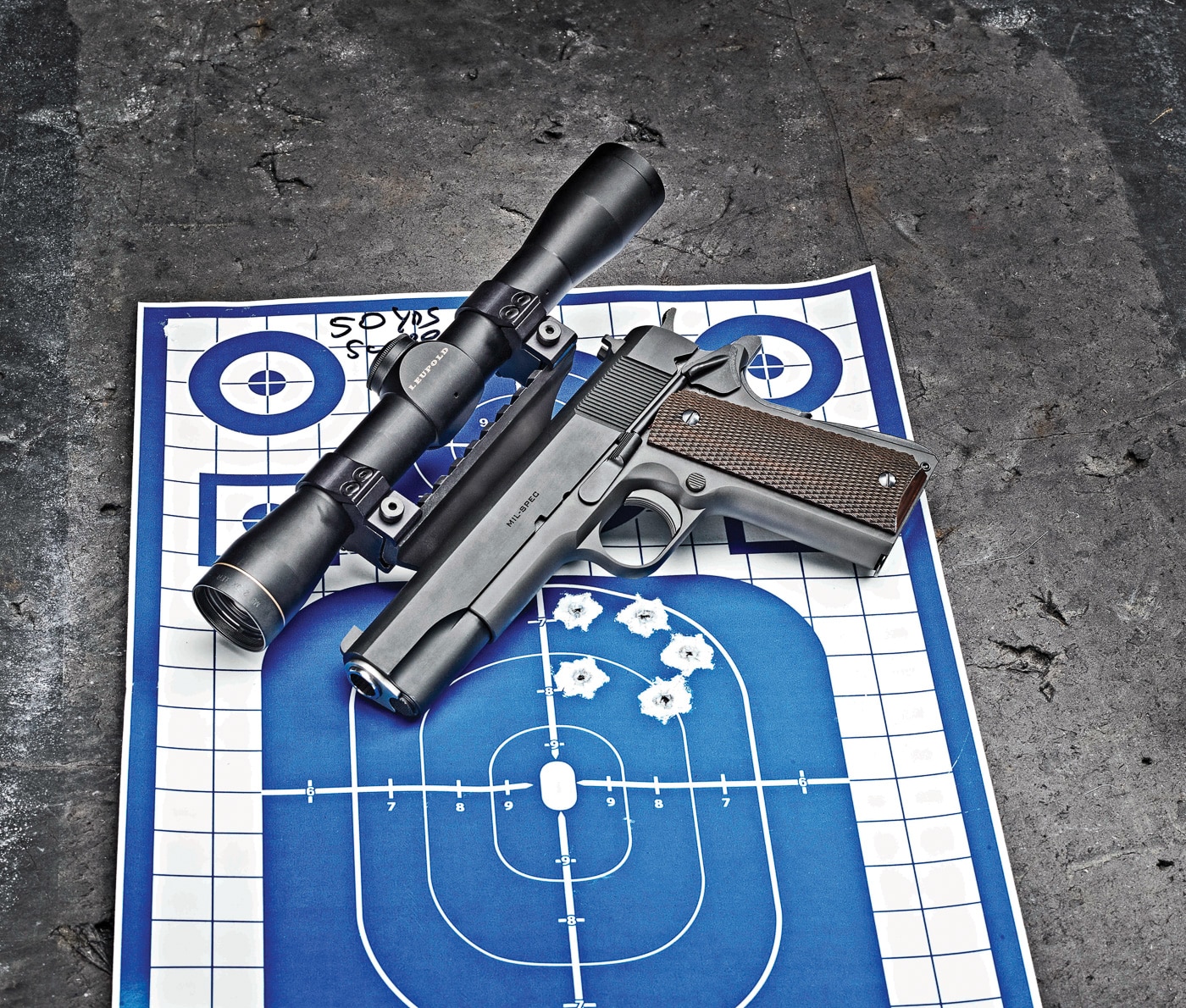
While sight pictures are important at any range, an excellent trigger press is paramount. The best sight picture or scope hold doesn’t mean a thing if you let it down with hurried or rough trigger work. Write that down on a card and hang it above your gun bench. I have one here next to my computer. It just says, “Press.” I see it 50 times a day as I work.
I can hear some scoffing out there. “Why even bother to do this past 25 yards?” they mutter. Was all this simply a fantasy game we played? Yet, who says you may not have to defend yourself “out there” someday? The recent mall shooting showed the ability to hit a miscreant at distance saved the day. Could you have done the same? I strongly advocate getting some long-distance shooting in with your daily carry gun. No — really.
I still target my small-frame revolvers and my pocket .380 out to 50 and even 100 yards regularly. Hearing that torso gong clang yields confidence in your gun — and yourself — and both are critical pieces of the pie if the need ever arises to apply yourself someday.
Now, go give it a try.
Editor’s Note: Please be sure to check out The Armory Life Forum, where you can comment about our daily articles, as well as just talk guns and gear. Click the “Go To Forum Thread” link below to jump in and discuss this article and much more!
Join the Discussion
Featured in this article
Continue Reading
Did you enjoy this article?

 305
305




